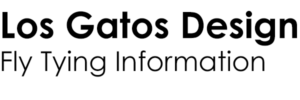Materials for Fly Tying
If you have ever been into a fly shop and ventured over to the fly-tying material section, it can be both overwhelming and over stimulating. Walls and racks covered with fur, feathers, foam, silicone legs, braided fibers, beads, and so much thread! It’s hard to keep it all straight! I will break it down into just a few materials needed to get started. Below are some basic materials.
1. Thread
Thread comes in a range of colors, brands and sizes. For starting out I recommend a 70-denier or a 8/0 UTC Ultra Thread. Start with white and black. You can use colored Permanent sharpies or pens to make any color from the white thread. For more detail, you can look at this link about thread.
2. Hooks
There are countless styles of hooks. You will need some basic hooks for trout. Here is the page with more detail about hooks.
3. Dubbing
Dubbing is a material that can be both natural and synthetic. Dubbing is used to form bodies in dry flies, wet flies, foam hoppers, streamers, and nymphs. This material comes in a variety of colors and densities. Assorted packs can be purchased to offer a variety of colors. With natural fur and a dedicated electric coffee grinder, you can make marvelous dubbing on your own. Everything from pet hair, soft hairs like rabbit and even road kill can make fantastic dubbing.
4. Deer and Elk Hair
A patch of fine deer hair will tie countless flies. Elk is also a good hair for flies. Deer tends to flair a bit more than elk. Both materials are used for wings on dry flies. Coarser deer hair is used for streamers and bass bugs.
5. Pheasant or Turkey Tail Feathers
Pheasant and Turkey Tail Feathers are dark and stiff, and used for the tails and wing backs of nymphs and wet flies. Turkey feathers are stronger and stiffer than pheasant tails and can be used as a minor variation to common flies like Prince Nymphs and Pheasant Tails.
6. Saddle Hackle
Saddle hackle feathers come from the long feathers of chickens. They are commonly used as tail feathers in streamers or palmered to make dry flies. Saddle hackles can be plain colored or barred, in natural colors or died. The most common dry fly is an Adams, and streamer is a Seaducer.
9. Sheet Foam
Sheet foam is a very basic material, commonly used for hoppers, terrestrials, frogs, and other topwater flies. This material ranges in color and thickness, and is usually purchased in sheets. Foam can be cut into strips and stacked, or it can be folded to make heads. The most common topwater fly is a gurgler, which can be used in both saltwater and freshwater. Hoppers and terrestrials are common foam flies as well, and are simple to tie for use on rivers and small ponds. Do not buy your foam at a fly shop….over priced. Local crafts shops like Michaels or Affordable Treasures have perfectly fine foam. I suggest 2 mm thickness to start.
10. Rubber Legs
Rubber legs are a silicon material that can be used to imitate legs, tails, and antennae. They come in a variety of colors, stripes and thicknesses. Utilize the legs on basic flies to add more movement, or to give bug flies and nymph flies a livelier presentation. Rubber legs are used in terrestrial flies, crawfish flies, shrimp and crab flies, as well as streamers.
11. Wire for Ribbing
Thin wire specifically used for fly tying is invaluable for ribbing your flies, including nymphs and streamers. Available in a range of thicknesses, I suggest starting with Fine and Brassie sizes in copper or gold. Other colors are available as needed.
11. Marabou
Marabou is an essential material for wooly buggers and many streamer patterns.
